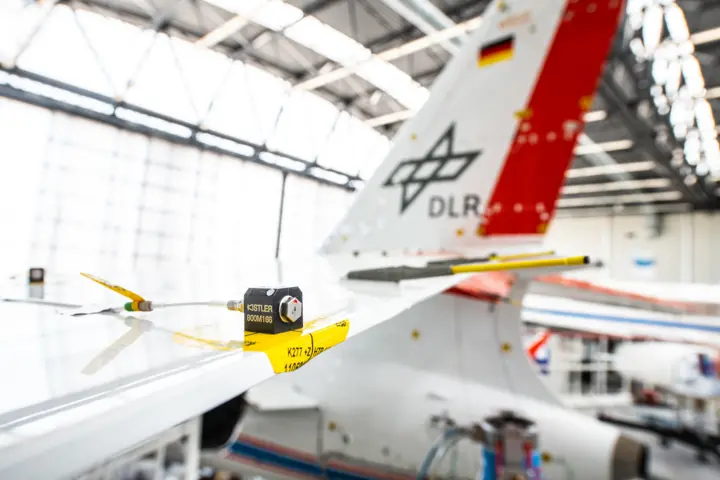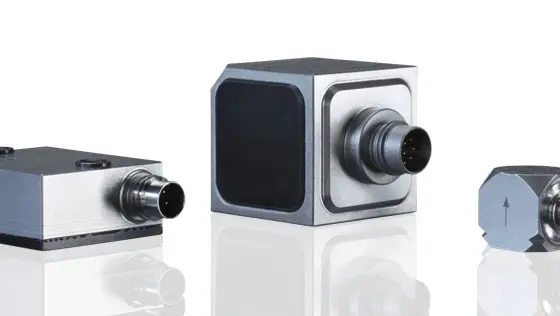Modal analysis is performed regularly on aircraft and their subcomponents to detect structural changes and potential damage. It includes experimental and analytical vibration investigations of acoustic, fatigue and functional aspects during the development phase of equipment and products.
One of the primary goals for design engineers is to determine the modal characteristics of the mechanical structure by testing and identifying the natural vibration modes. Ground vibration testing (GVT) typically calls for a large number of high-performance accelerometers at reasonable cost. Modal accelerometers from Kistler are available for three measurement ranges, including 5 g, 10 g and 50 g, offering an accurate frequency and phase response within the specified frequency range.
High channel count systems of this type must offer the required technical properties, but easy handling during installation is also of the utmost importance. Short installation times, low error rates and reliability over a 10-year timeframe are the key criteria. There are two key parameters to reduce error rates and time needed for installation: TEDS capability (Transducer Electronic Datasheet) and the sensitive axis alignment in relation to the overall coordinate system.

![Vibration testing [object Object]](https://kistler.cdn.celum.cloud/SAPCommerce_CMSHeading_1100x420/vibration-testing-16599.webp)







![Solutions for aviation testing [object Object]](https://kistler.cdn.celum.cloud/SAPCommerce_Document_Preview/961-213e.webp)
![Design trends in modal [object Object]](https://kistler.cdn.celum.cloud/SAPCommerce_Document_Preview/961-268e.webp)
![JBEAM Measurement Data Evaluation [object Object]](https://kistler.cdn.celum.cloud/SAPCommerce_Document_Preview/961-713e.webp)
![AS9100 D certificate granted to the facility of the Kistler Group site in the U.S. [object Object]](https://kistler.cdn.celum.cloud/SAPCommerce_Document_Preview/999-240e.webp)